If you are planning a trip to Japan and want a cultural experience that will let you see the Japanese at their most joyous and carefree, then I highly recommend that you watch a baseball game in Japan. Even if you do not know the rules, watching Japanese baseball is one of the best ways to see a side of Japan that you do not normally get to see, one where sharing sake, dancing in the bleachers, and screaming with glee is almost inevitable.
This guide explains the history of Japanese baseball, how it is different from baseball in the United States, which teams to follow, how the season works, how to buy tickets, what to eat in the stadium, and what you need to know so you can confidently watch Japanese baseball on your next trip. This post might also be a little about why you should love the Hanshin Tigers, Hiroshima Carp, and the Yakult Swallows.
Innovative Language!
1. A Short History of Japanese Baseball
First things first, to understand why you should watch a baseball game in Japan, it helps to know how deeply the sport is threaded into Japanese culture. Baseball arrived in the late nineteenth century by American educators. Students quickly embraced the game and it spread through universities, high schools, and local clubs.
By the early twentieth century, Japanese baseball had grown from a school activity into a national passion. Professional teams began to form, and exhibition games drew large crowds. After World War II, professional leagues were reorganized into what is now known as Nippon Professional Baseball, usually called NPB. The league is divided into two parts, the Central League and the Pacific League, and includes iconic teams that many Japanese people grow up supporting for life.
Over the decades, star players, dramatic pennant races, and legendary rivalries turned NPB into one of the most beloved sports structures in Japan. Japanese players began to move abroad and succeed in Major League Baseball, which created a new level of international respect for Japanese training and talent. In 2025, not one, not two, but three Japanese baseball players formed part of the LA Dodgers World Series winning team with pitcher Yoshinobu Yamamoto taking home the MVP and teammate Shohei Ohtani breaking several records with additional pitching prowess from Roki Sasaki.
Today, when you watch Japanese baseball, you taking part in a continuing tradition that has marinated for more than a century. The chants, uniforms, mascots, and stadium rituals all reflect that history.
2. The Importance of the Koshien High School Baseball Tournament
To truly understand why Japanese baseball inspires such devotion, you need to know about the Koshien High School Baseball Tournament. This event is held twice a year at Koshien Stadium near Osaka and is one of the most emotional and culturally significant sports competitions in the country. Many Japanese people grow up dreaming not of playing professional baseball first but of reaching Koshien.
Koshien is actually two tournaments. The Spring Tournament, known as Senbatsu, invites selected schools. The Summer Tournament is a massive nationwide competition. Teams from every prefecture battle through intense local qualifiers for a chance to play on the famous dirt in front of packed national TV audiences. Schools train for months or even years hoping to reach this stage.
The atmosphere at Koshien is palpable and powerful. Students carry their school banners, marching bands play nonstop, and entire hometowns gather around televisions and radios to follow their team’s progress. Players often cry when they win and cry even harder when they lose. Coaches speak reverently about the stadium dirt, and players often kneel to scoop some of it into bags to take home as a lifelong keepsake.
Many of Japan’s most famous professional players first captured the nation’s attention during Koshien including Shohei Ohtani. Winning teams become legends. Losing teams still gain respect for their discipline and effort. For many fans, watching Japanese baseball today carries echoes of the Koshien memories they grew up with.
This is why the Hanshin Tigers’ home stadium, Koshien, has such a powerful presence. When you watch a baseball game in Japan at Koshien, you are standing in the same place where generations of teenagers played the most important games of their lives. The pride, nostalgia, and emotional weight of Koshien shape how people across the country experience the sport This is one of the big reasons why the Hanshin Tigers are my favorite Japanese baseball team. The passionate energy of the fans is inspiring and the energy you feel in the stadium along with the beloved history of the stadium elevates it to something truly magical.
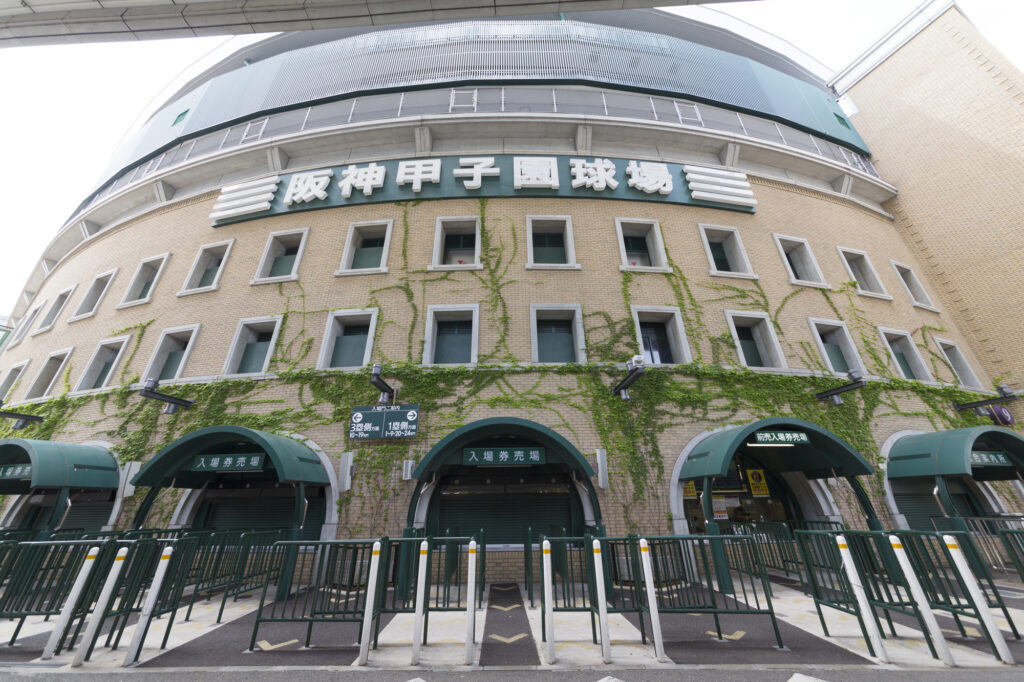
3. How Japanese Baseball Differs From American Baseball
If you already like baseball, you will recognize the basic rules when you watch a baseball game in Japan. The differences are not in the rule book as much as in the atmosphere and customs. These differences are exactly what makes watching Japanese baseball so special for travelers.
The Energy of the Japanese Baseball Crowd
In the United States, fans cheer during big plays or tense moments. At other times, they are often talking about a variety of other topics, chatting constantly (yes, this includes me). However, in Japan, cheering is a highly organized affair. Each team has a dedicated cheering section that leads songs, chants, and rhythms throughout the game. Trumpets, drums, clapping, and synchronized movements create a steady wave of sound.
When you sit in the home fan section in Japan, you become part of a moving, singing, clapping sea of fans. It feels more like a festival than a typical sports event.
You will also notice that many fans are Japanese businessmen still dressed in their suits fresh from the office. They watch the game in silence, heavily focused on each play. At some point, though, you may notice that they hit peak beer or sake level and become the definition of joy and playfulness. It is miraculous to witness and you almost feel that you’ve suddenly stepped into bizarro Japan where the volume and the laughter has been turned up to 11. I love that about being at a Japanese baseball game.
Lucky 7 and the Seventh Inning
Japan has its own version of the seventh inning stretch. Many teams celebrate a moment known as Lucky 7. Fans might sing a team song, release long balloons into the sky (Hanshin Tigers), wave umbrellas (Yakult Swallows, Hiroshima Carp, Orix Buffaloes), or perform a specific chant (Yomiuri Giants).
This is one of the most memorable parts of watching Japanese baseball. Even if you are not following the score closely, you will remember the sight of thousands of fans releasing balloons or coordinating a stadium wide movement in perfect rhythm.
Personal Songs and Player Themes
Another charming detail appears every time a batter steps to the plate. Many players have their own unique fan songs. The cheering section leads the entire stadium in a chant for that specific player while he is batting.
You may not know the words, but you will feel the energy. After a few innings you will find yourself humming along. This is one of the reasons you should sit with home team supporters if you really want to experience what it is like to watch a Japanese baseball game in Japan like a local.
Stadium Layout and Fan Sections
Japanese stadiums often separate home and away fans into different zones. Home fans usually take over one side of the outfield, while visiting fans sit on the opposite side. This structure is not hostile. It simply gives each group space to perform their team’s chants and songs without clashing sounds.
As a tourist, you will usually be welcomed warmly in the home fan section. Locals love when visitors come to watch Japanese baseball and enjoy their traditions. I have been offered snacks and sake by locals just because I was sitting near them in the stadium.
Japanese Mascots and On Field Performances
Mascots are a huge part of watching a baseball game in Japan. Every team has at least one mascot character, often cute or goofy, who appears throughout the game. They dance on the field, joke with the umpires, interact with kids, and keep the crowd entertained between innings.
These mascots are celebrities in their own right. Team shops sell mascot plush toys, keychains, and shirts. Even if you are not a big sports fan, the mascots make it easy to enjoy the show. My favorite Japanese mascot is the Hiroshima Carp mascot, “Carp Boy” because it reminds me of the mascot “Mr. Red” from my beloved Cincinnati Reds, my hometown team. The white “C” on the red Hiroshima Carp hat is also very similar to the Cincinnati Reds hat. Go check that out.
4. The Most Popular Teams to Watch in Japan
When planning to watch a Japanese baseball game, it helps to know which teams offer the best combination of excitement, history, and easy access for visitors. Here are some of the top teams that are, in my opinion, especially good choices for tourists.
Hanshin Tigers
The Hanshin Tigers are one of the most iconic teams you can watch when you watch a baseball game in Japan. This is my favorite team in Japan! They play at the legendary Koshien Stadium, located between Osaka and Kobe. Koshien is a symbol of Japanese baseball culture and one of the most emotionally charged stadiums in the country. Many fans consider it sacred ground because it also hosts the nationwide high school Koshien tournaments, which are among the most watched and beloved sporting events in Japan. For generations of Japanese people, Koshien represents childhood dreams, heartbreak, victory, and community pride.
The Tigers’ connection to Koshien creates an atmosphere that is unlike any other. Every seat in the stadium carries a sense of tradition. The dirt on the field is famous, the ivy on the walls is iconic, and the fan passion is unmatched. When you watch Japanese baseball at Koshien, you feel the weight of history in the air. From the moment you step into the stadium, you hear the sound of drums, trumpets, chants, and coordinated cheering that begins even before the first pitch.
Tigers fans are known as some of the most passionate and dedicated supporters in Japan. They sing long, complex chants for every player. They wave yellow and black towels and flags. They clap in perfect rhythm. The noise never stops. The intensity builds throughout the game until it reaches its peak during Lucky 7, when thousands of fans release long, colorful balloons into the sky in an explosion of sound and color. Seeing Koshien erupt with balloons is one of the most unforgettable experiences for anyone watching a baseball game in Japan for the first time. Somewhere in the annals of my photos is a picture of me and my Mom, cheering with balloons at Koshien
If you want your first time watching Japanese baseball to be intense, passionate, and full of raw energy, a Hanshin Tigers home game is the perfect choice. It is loud, emotional, welcoming, and unforgettable. No other stadium captures the spirit of Japanese baseball quite like Koshien.
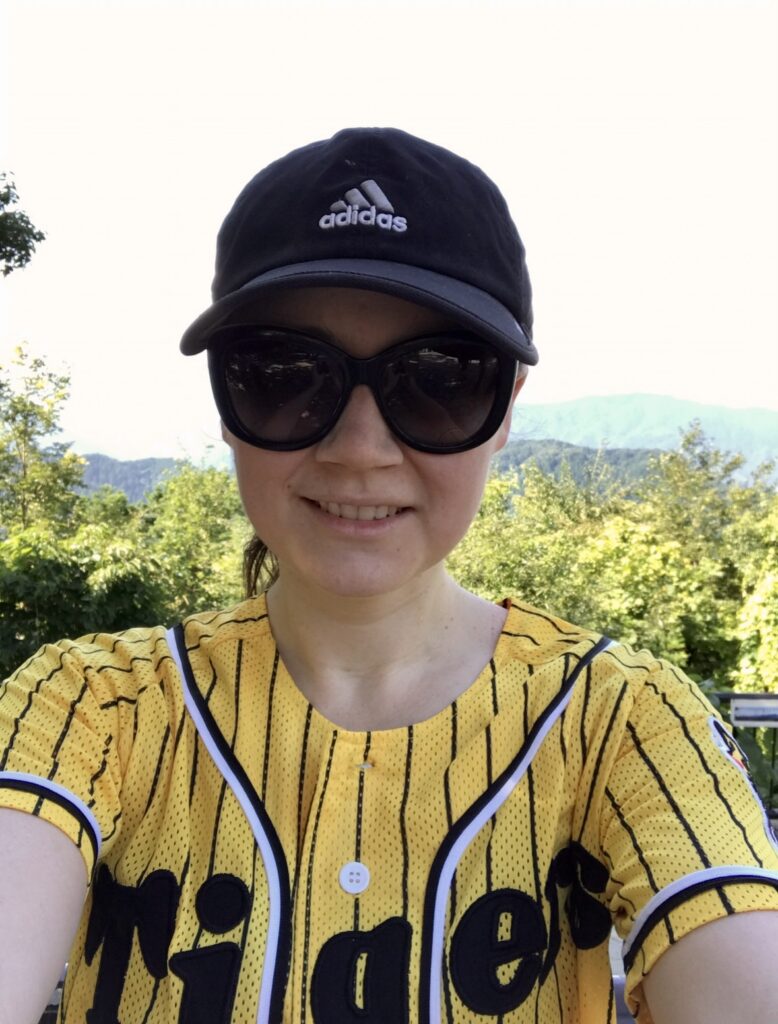
Hiroshima Toyo Carp
The Hiroshima Toyo Carp are another excellent team to consider when deciding where to watch a baseball game in Japan. They play at Mazda Zoom Zoom Stadium Hiroshima (cute name, right?), one of the most modern and fan-friendly ballparks in the country. The stadium is open air, beautifully designed, and built to give fans a close view of the action from almost every seat. Because Hiroshima is already a major destination for travelers visiting the Peace Memorial Park, the Atomic Bomb Dome, and nearby Miyajima Island, attending a Carp game fits naturally into many tourist itineraries.
What makes the Carp special is their deep connection to the city of Hiroshima. The team was originally founded with strong community support after World War II, and the fans have maintained that sense of unity and identity ever since. When you watch Japanese baseball in Hiroshima, you immediately feel how the team represents resilience, pride, and hometown spirit. Families, students, longtime residents, and visitors all come together to support the Carp with enthusiasm and warmth.
Carp fans are known for their bright red team colors, which fill the stadium like a sea of crimson. On game days, you see red jerseys, red towels, red hats, and red banners everywhere you look. When the team rallies, the entire stadium moves as one, waving towels and cheering in synchronized chants that create a powerful visual and emotional impact. It looks like they stand united, dancing together, which is so much fun to watch. This coordinated energy makes watching a baseball game in Japan feel like you’re part of a festival, not just a sporting event.
The Carp also have a reputation for being approachable and community oriented. Many fans feel a personal attachment to the players and take pride in supporting them throughout the season. The atmosphere inside Mazda Zoom Zoom Stadium is lively but also relaxed and welcoming, making it an excellent choice for tourists, families, and first-time baseball watchers.

Tokyo Yakult Swallows
If you are staying in Tokyo and want a more laid back but still incredibly fun baseball experience, the Tokyo Yakult Swallows are one of the best teams to watch. They play at Meiji Jingu Stadium, one of the oldest and most beloved ballparks in Japan. Built in 1926 and nestled within the leafy Jingu Gaien park area, the stadium feels like a classic throwback to the early days of baseball in Japan. Even though Tokyo is one of the busiest cities in the world, Meiji Jingu Stadium has a surprisingly peaceful atmosphere thanks to the surrounding trees, open sky, and traditional ballpark design. Watching Japanese baseball here is one of the best introductions to the game you can get, and it is my favorite Tokyo team to watch.
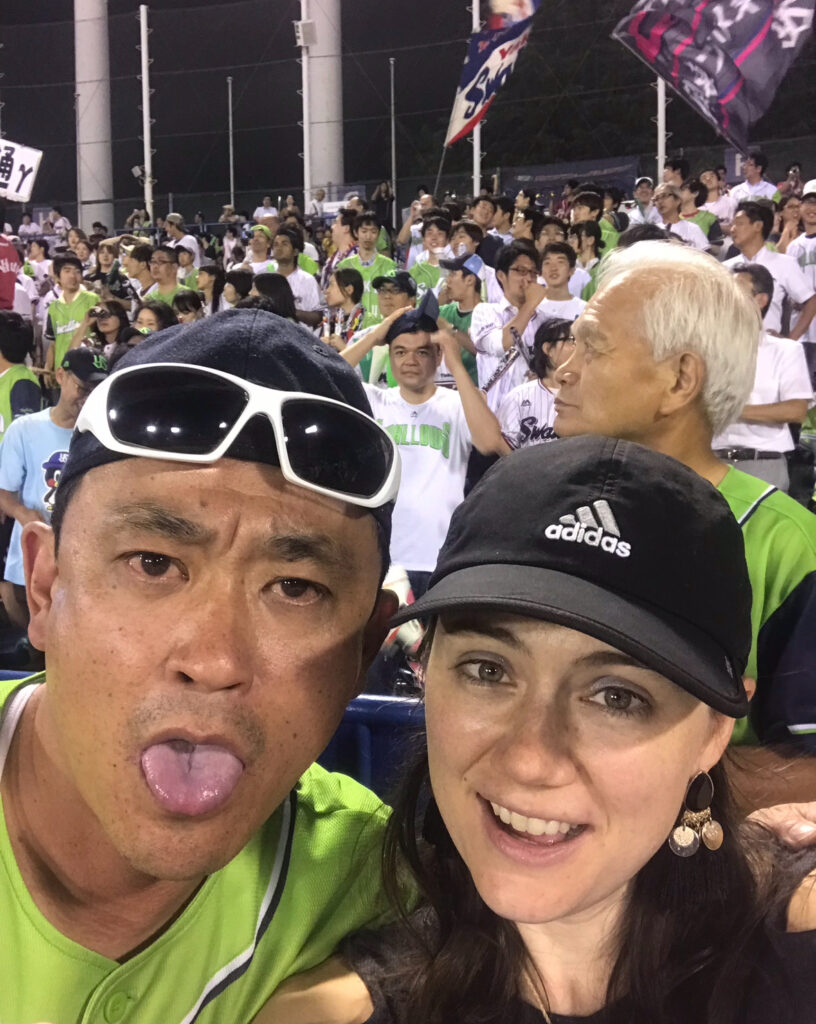
The Swallows have a loyal fan base that is known for being friendly, humorous, and full of personality. While they may not have the massive scale of the Yomiuri Giants, the Swallows have something that many visitors find even more charming: a truly unique cheering style. Swallows fans are famous for their umbrella dance, one of the most iconic traditions you will see when you watch a baseball game in Japan. Whenever the team scores a run, fans pop open small, brightly colored umbrellas and wave them in rhythm while singing their cheerful chant. The “Go Go Swallows” chant echoes through the stadium and creates a sense of unity that even first time visitors can join easily.
This umbrella dance while singing the Japanese folk song “Tokyo Ondo has become so culturally recognizable that many travelers choose to watch Japanese baseball specifically to see it in person. The dance is fun, light hearted, and welcoming. You do not need to know the words or the movements in advance. You just follow the fans around you and enjoy the moment. Kids, grandparents, longtime supporters, and tourists all participate together.
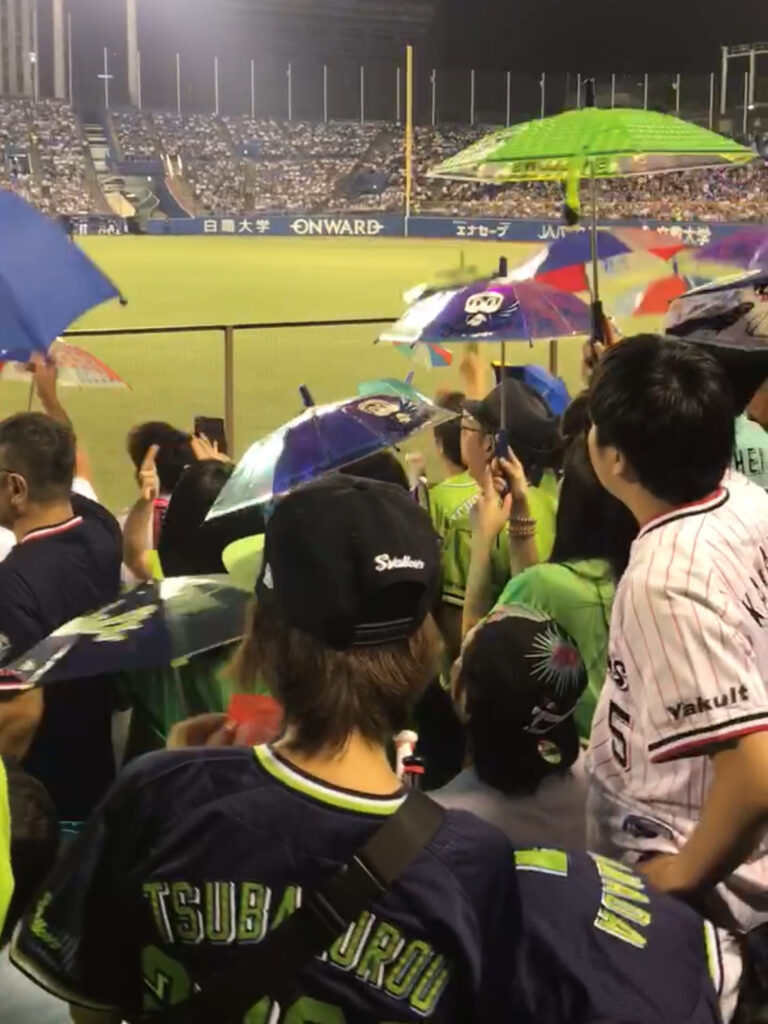
The Swallows are also known for their underdog identity. They are kind of like the New York Mets compared to the Yomiuri Giants, the other Tokyo team with the shiner stadium and a New York Yankees vibe. They are not the big powerhouse team in Tokyo, but they have heart, grit, and a loyal following that sticks with them through every season. Their games feel more casual and approachable, which makes them perfect for travelers who want to watch Japanese baseball without the overwhelming size and noise of the Tokyo Dome.
One important note: the classic Meiji Jingu Stadium, which opened in 1926, is slated to be demolished and rebuilt on the grounds of the nearby rugby stadium with a roof over the field and stands. While it is currently still open, it is living on borrowed time. Get there as soon as possible!

ORIX Buffaloes
The ORIX Buffaloes are one of the most important teams to know if you want to watch a Japanese baseball game, especially in the Osaka region. They play at the modern, air conditioned Kyocera Dome Osaka, a comfortable and well designed stadium that offers clear views, great food options, and an easy experience for both seasoned fans and first time visitors. Compare this to the home of the Hanshin Tigers at Koshien Stadium. The Buffaloes have built a strong local following and are known for being one of the most forward thinking teams in NPB.
One of the biggest reasons international fans now recognize the ORIX Buffaloes is the rise of Yoshinobu Yamamoto, one of the most dominant pitchers of his generation. Yamamoto began his professional career with the Buffaloes as a young phenom. During his time in Japan, he won multiple Sawamura Awards, which is the Japanese equivalent of the Cy Young. He also led the Pacific League in ERA for multiple seasons and helped the Buffaloes reach the Japan Series. His dominance in NPB made him one of the most sought after pitchers in the world.
His success continued after moving to the Los Angeles Dodgers. In 2025, Yamamoto became the MVP of the World Series and delivered legendary performances against the Toronto Blue Jays, which helped to secure the Dodgers’ championship. His journey from Osaka’s dome stadium to Major League Baseball glory further increased global attention on the ORIX Buffaloes. Many travelers now visit Buffaloes games specifically because they want to see the team that produced one of the most celebrated pitchers of the modern era.
Watching the ORIX Buffaloes is a perfect way to experience how Japanese baseball blends tradition with innovation. The cheering culture at the dome is lively without being overwhelming, and the stadium layout makes it easy to settle in, try different foods, and enjoy the game at your own pace. If you are staying in Osaka and cannot get a Hanshin Tigers ticket, or if you want to watch Japanese baseball in a state-of-the-art environment, the ORIX Buffaloes offer a fantastic opportunity to experience the sport up close.

Yomiuri Giants
The Yomiuri Giants are the oldest, most successful, and most widely recognized professional baseball team in Japan. For many fans, the Giants are synonymous with the history of Japanese baseball itself. Founded in the 1930s, they are the flagship franchise of Nippon Professional Baseball and are often compared to the New York Yankees because of their championship legacy, massive media presence, and national fan base. If you want to watch a baseball game in Japan that feels iconic and deeply rooted in tradition, the Giants are a must see.
The team plays at the Tokyo Dome, one of the most famous stadiums in Asia. The Tokyo Dome is a huge indoor arena with a distinctive white roof and a polished, modern feel. As soon as you walk inside, you understand why watching Japanese baseball here is such a memorable experience. The bright lights wash over the field, enormous screens highlight every key moment, and the acoustics amplify the cheering to create a lively atmosphere no matter the weather. The dome protects fans from rain and heat, which makes Giants games a comfortable experience throughout the season.
The Tokyo Dome complex also includes restaurants, shops, an amusement park, and easy access to public transit, which makes attending a Giants game convenient even for first time visitors. Many travelers choose a Giants game specifically because it is simple to reach, easy to navigate, and always full of excitement. The crowd includes everyone from long time supporters to families, office workers unwinding after a busy day, and international visitors eager to watch Japanese baseball in one of its most iconic venues.
On the field, the Giants consistently attract top talent. Their roster has historically included some of the biggest names in Japanese baseball. This has helped them maintain a strong, competitive presence and fueled rivalries that draw huge crowds. Games against teams like the Hanshin Tigers or Hiroshima Carp can sell out long before game day. When the Giants play in a packed Tokyo Dome, the energy is electric.
Giants fans are enthusiastic and organized, but the cheering style here is slightly more polished and structured compared to the wild festival atmosphere of Koshien Stadium or the quirky umbrella dances of Meiji Jingu Stadium. The Giants offer a different kind of experience when you watch a baseball game in Japan. The chants are loud and spirited, but the overall presentation has a high production feel that makes every game feel like a major event.
Because the Giants are so popular, securing tickets for weekend games or important matchups requires planning. Large crowds and high demand mean seats can sell out quickly, especially during the summer months or rivalry series. For travelers who want a classic experience, booking in advance ensures you get the full thrill of watching Japanese baseball in the country’s most famous indoor stadium.
Hokkaido Nippon-Ham Fighters
The Hokkaido Nippon-Ham Fighters are one of the most fascinating teams to watch in northern Japan, and they hold a special place in modern baseball history because this is where Shohei Ohtani began his professional career. Before becoming a global superstar, Ohtani debuted with the Fighters as a teenager, and manager Hideki Kuriyama played an instrumental role in allowing Ohtani to develop both as a pitcher and a hitter in a way no modern player had done at a high level.
His years with the Fighters set the foundation for what many consider one of the greatest careers the sport has ever seen. Ohtani is the only player in modern baseball history to dominate as both an elite pitcher and an elite hitter at the same time. He has won MVP awards in both leagues, shattered home run records for his position, regularly throws 100 mph, and has broken statistical models because no player in the modern era has been able to perform at such a high two-way level. Analysts frequently compare his achievements to Babe Ruth, but even Ruth never reached Ohtani’s peak as a two-way player in the same season. That unique, unprecedented versatility began in Hokkaido.
The Fighters now play at ES CON Field Hokkaido, one of the most innovative stadiums in Japan. The ballpark feels more like a baseball village with open concourses, natural scenery, a retractable roof, and even areas where fans can watch the game from grassy terraces. It is designed to make watching Japanese baseball feel immersive, comfortable, and community driven.
Fighters fans are energetic but relaxed, and the atmosphere is welcoming for travelers. Because the stadium is located in Hokkaido, many visitors combine a game with exploring the region’s incredible natural landscapes.
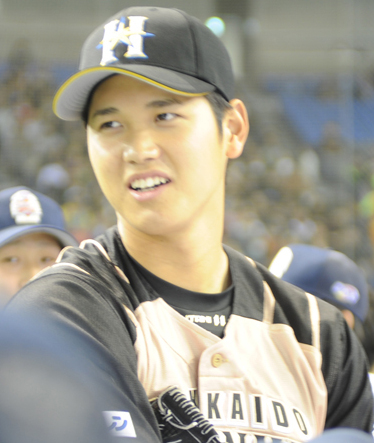
By U.S. Army photos by Noriko Kudo – https://www.flickr.com/photos/usagj/16735312258/, Public Domain, https://commons.wikimedia.org/w/index.php?curid=129845457
5. Why You Should Watch a Baseball Game in Japan Even if You Do Not Know Baseball
Many travelers worry that they will not enjoy a game because they do not know the rules. The truth is that you can watch Japanese baseball and have an amazing time even if you do not know what a strike zone is. Let’s learn a little bit about the rules just so can have a basic understanding.
A Simple Explanation of How Baseball Works
You do not need to become an expert to enjoy the game. Here is a basic explanation so you can feel comfortable when you watch a Japanese baseball game.
- The game is divided into sections called innings. Each inning has a top half and a bottom half. There are nine innings in a regular game, but the game can go on for as many innings as it takes to break a tie.
- The visiting team bats in the top half. The home team bats in the bottom half.
- The batting team tries to hit the ball and run around four bases to reach home plate. When a player reaches home, the team scores a run.
- The fielding team tries to get three outs. An out happens when the batter strikes out, when a hit ball is caught before it touches the ground, or when the ball reaches a base before the runner does.
- After three outs, the teams switch roles. When both teams have batted, the inning is over.
That is enough to enjoy watching Japanese baseball. The crowd will let you know when something important happens.
6. When to Watch Japanese Baseball
The NPB season usually runs from late March through October. This lines up well with the most popular travel months in Japan.
Spring is a fabulous time to watch a Japanese baseball game particularly when cherry blossoms are in bloom and the weather is mild. Summer games can be hot, but the night games feel festive and electric under the lights. Early autumn offers comfortable temperatures and important late season matchups as teams fight for playoff positions.
If you know which cities you will visit, you can look at home schedules for local teams and plan your trip around a game. There are many regular season games, so you will likely find at least one that fits your itinerary.
7. How to Buy Tickets and Typical Costs
Buying tickets to watch Japanese baseball has become much easier for visitors.
Many teams offer online ticket sales. Their websites or partner sites often have English menus or simple interfaces that are easy to follow even if you do not read Japanese. You choose the game, pick your seating area, and pay by credit card.
You can also buy tickets inside Japan at convenience stores. Many large chains have ticket machines that let you pick the team, date, and seat type. Once you complete the selection, the machine prints a receipt that you take to the counter to pay. After paying, you receive your ticket. I have found that the easiest places to buy tickets are at Lawson, Family Mart, or Seven Eleven convenience stores throughout the country if you are already in Japan.

On game day, larger stadiums sometimes have ticket windows for same day sales. This is risky for very popular games but can work for weekday or less crowded matchups.
Prices vary based on team, opponent, and seat location, but in general watching Japanese baseball is quite affordable. Outfield or non reserved seats are usually the cheapest, often starting in the low thousands of yen. Infield seats and lower level sections cost more, and premium or box seats cost the most.
If your goal is to really experience what it feels like to watch a Japanese baseball game as a local, try to sit in or near the home cheering section. That is where the chants, drums, and coordinated songs are strongest.
Additional Tips for Buying Tickets and Choosing Seats When You Watch a Baseball Game in Japan
If you plan to watch a baseball game in Japan, it helps to understand how Japanese ticketing sites work, what information you may need to enter, and how to choose the best seats for your experience. Japanese baseball stadiums are friendly and welcoming to international visitors, but their online systems sometimes assume users already live in Japan. These tips will make the process much easier and help you get the best possible seats when watching Japanese baseball.
Using a Japanese Address and Phone Number
When creating an account or purchasing tickets online, some teams require a Japanese address. If this happens, most travelers can use their hotel’s address as long as they are not requesting physical delivery of the ticket. Most ticketing systems automatically recognize the city and prefecture once you enter the postal code in the format XXX-XXXX. To complete the rest of the address line, you can use Google Translate to copy the Japanese text and paste it into the form. If the site rejects your personal phone number, try using your hotel’s phone number instead. This usually works and allows you to complete the purchase.
Understanding Full-Width and Half-Width Characters
Many Japanese ticketing platforms request names in specific character formats. This can be confusing at first, but it is easy once you know what each field means.
Full-Width Characters
A full-width field is normally intended for kanji, but you can enter English letters without issue. If you want to signal that you are a foreign visitor, you can convert standard letters into full-width versions using an online converter.
Half-Width Katakana
Some forms require your name in half-width katakana, the phonetic writing system used for foreign names. The easiest method is to type your name into Google Translate, switch it to Japanese, and copy the katakana version into the form. This satisfies the requirement even if you do not read Japanese.
Where to Sit When You Watch Japanese Baseball
Every stadium in Japan has its own layout, but most parks offer similar categories of seating. Knowing the differences will help you choose the right spot when you watch a Japanese baseball game for the first time.
Common Seat Types
- Standard infield seats in the lower or upper levels
- Non reserved outfield or corner seats
- Special bar-style counters or seating zones without traditional chairs
Standard infield seats offer the clearest view of the action. Outfield seats are usually cheaper and give you a lively atmosphere. Non reserved sections are a budget-friendly choice, but it is important to arrive early because these areas fill quickly.
The Ouendan – The Heart of the Japanese Baseball Experience
One thing you will find in every Japanese stadium is the ouendan, the organized cheering groups that lead the chants, songs, clapping rhythms, and trumpet melodies that make Japanese baseball so unique. These groups sit in the outfield bleachers and create the electric energy that makes it unforgettable to watch Japanese baseball in person. If you want the loudest, most immersive experience, choose a seat in or near the home team’s cheering area. Even if you do not understand Japanese, you can clap along and pick up simple repeated chants. If you prefer a calmer and quieter viewing experience, it is best to avoid sitting directly in these sections because the cheering continues nonstop from the first pitch to the final out.
Home vs. Visiting Cheering Sections
At most NPB stadiums, the home ouendan sits in the right field bleachers, while the visiting ouendan occupies designated sections in left field. Three teams reverse this arrangement: the Hokkaido Nippon Ham Fighters, the Tohoku Rakuten Golden Eagles, and the Saitama Seibu Lions. Regardless of the stadium’s layout, avoid wearing home team gear in the visiting section and vice versa. While Japanese fans are very polite, seating etiquette is taken seriously and keeps the atmosphere enjoyable for everyone.
Standing Room Tickets (Tachimi)
Many stadiums also offer standing room tickets called tachimi (立ち見). These are great for games that sell out or for travelers who want flexibility to move around during the game. Standing room areas often have excellent views and allow you to take in the entire stadium atmosphere from multiple angles. If you are trying to watch a baseball game in Japan at the last minute or simply want a different way to experience the crowd, tachimi is a solid option. This is often at the top of the stadium.
8. Important Things To Know On Game Day
Before you step into the stadium to watch Japanese baseball, there are a few key rules and customs to keep in mind.
Food and Drink Rules
Most Japanese stadiums allow you to bring your own food and drinks, which is a pleasant surprise for many visitors. However, there are important safety rules
- Do not bring glass bottles
- You will need to pour any aluminum cans into paper cups provided by the stadium
If you bring alcoholic drinks from outside, staff will ask you to pour them into paper cups provided by the stadium. This prevents dangerous objects from being thrown onto the field and helps keep the environment safe and friendly.
Stadium Snacks You Should Try
Stadium food in Japan is far more interesting than plain hot dogs and fries. While options vary by stadium, some common items include
- Yakisoba or other noodle dishes
- Fried chicken pieces
- Bento boxes with rice, meat, and pickles
- Takoyaki in regions like Osaka
- Ice cream and soft drinks
- Team themed meals and desserts
Arrive early, walk around the concourse, and explore the different food options. Eating local stadium food is part of the experience when you watch Japanese baseball.
Cleanliness and Etiquette
Japanese stadiums are extremely clean. Staff members, volunteers, and fans work together to keep them that way. Fans often collect their own trash and carry it to designated bins.
As a visitor, try to follow that example. Keep your area tidy, avoid blocking aisles, and follow instructions from staff. You will notice that even large crowds remain polite and orderly.
Joining the Chants
You are not required to chant or sing, but you are always welcome to join. Even clapping in rhythm or repeating a simple phrase makes you feel more connected to the crowd.
Many tourists find that after one or two innings, they are already chanting “Go Go Swallows” or shouting for the Tigers along with everyone around them. This is one of the joys of choosing to watch a baseball game in Japan rather than just reading about it.
Buying Merchandise
Most stadiums have team shops where you can buy jerseys, caps, towels, small umbrellas, keychains, and other souvenirs. Towels and umbrellas are especially popular because fans use them in chants and dances. Bringing one home is a great reminder of your time watching Japanese baseball.
Final Pitch: Why You Should Watch a Japanese Baseball Game
To watch Japanese baseball is to see Japan at play. It is joyful, structured, and full of small details that you will remember long after the game ends.
On your next trip, pick a city, choose a team, buy a ticket, and let the crowd carry you. Once you watch a Japanese baseball game, you may find yourself planning your future trips around the next chance to join those songs and cheers.
When you are surrounded by thousands of people singing, clapping, and cheering, you do not feel lost. The crowd tells you what is exciting. When everyone stands up and yells, you know something big just happened. When the cheering grows quiet, you can relax and watch the players reset.
Stadiums are filled with families, couples, groups of coworkers, and groups of friends. You see people in jerseys and business clothes, grandparents with grandchildren, and groups of students.
If you want to see what local life looks like beyond tourist attractions, you should watch Japanese baseball. You will see how people unwind after work, how they celebrate wins and handle losses, and how they interact with strangers in a cheerful, respectful, and joyous way.

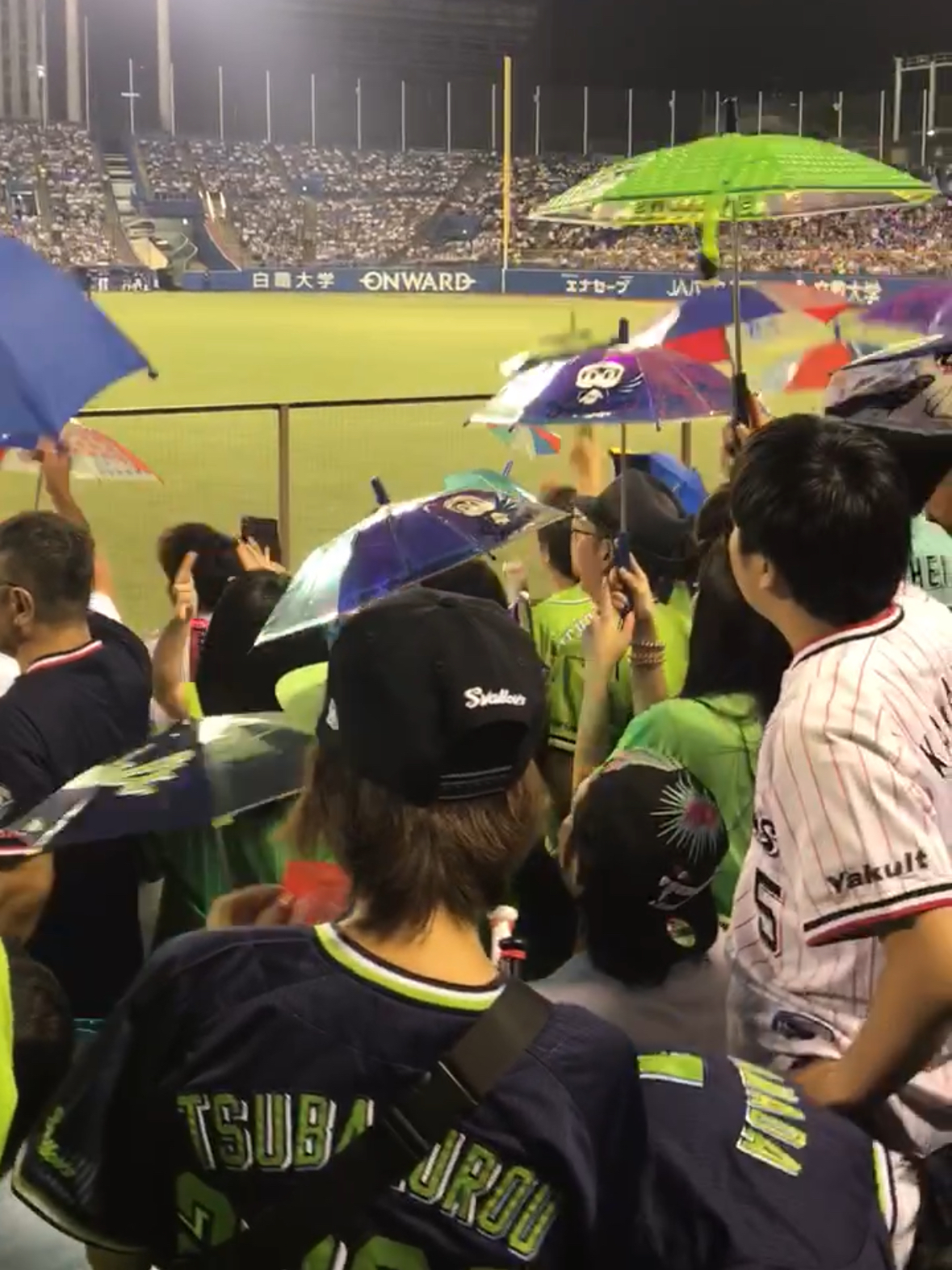
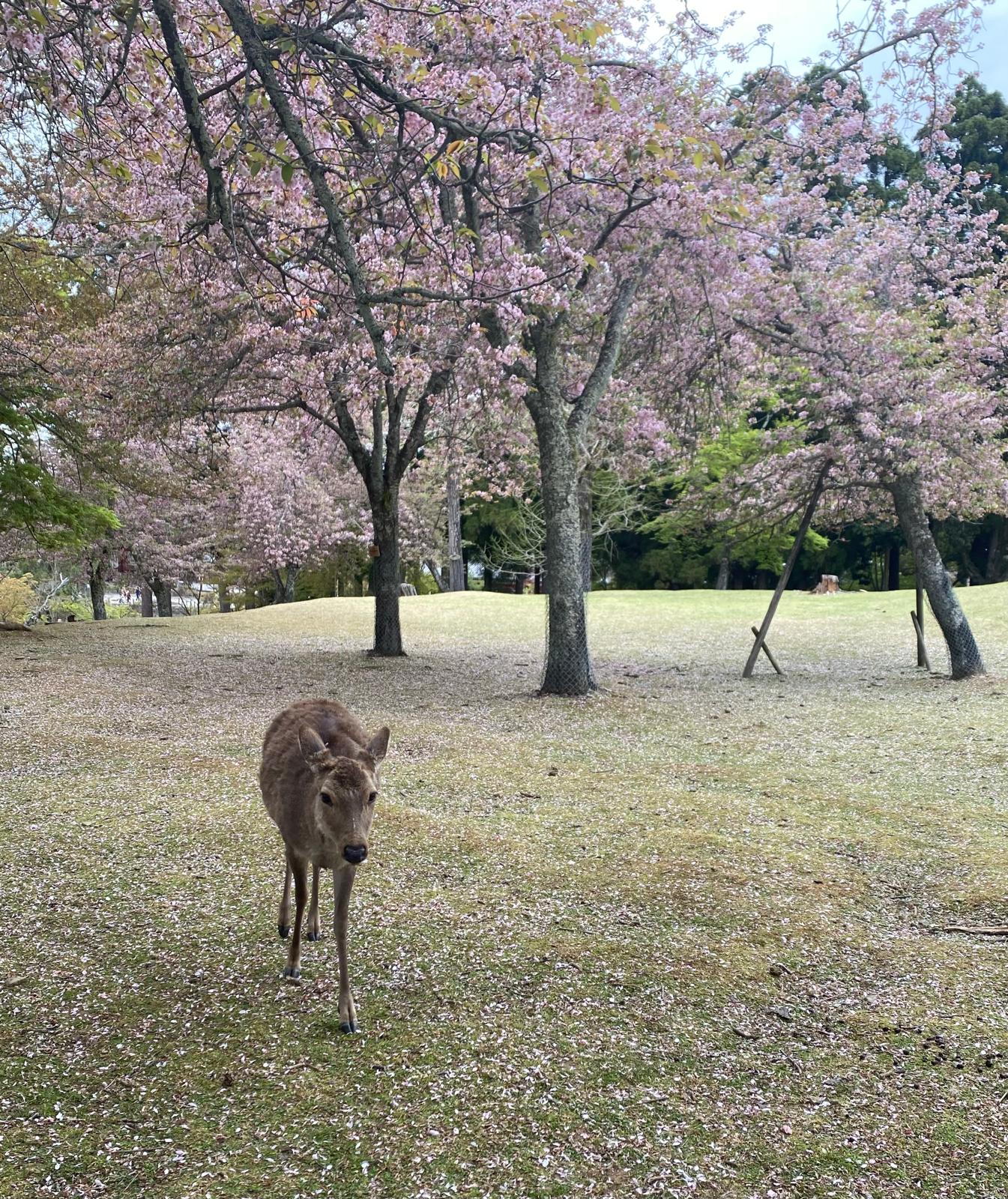
0 Comments